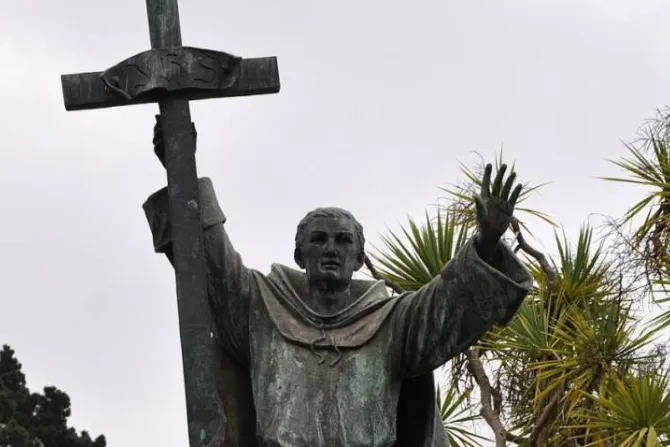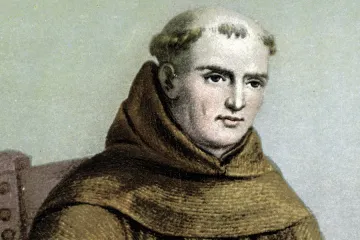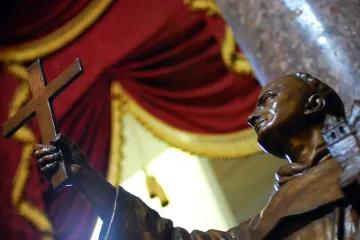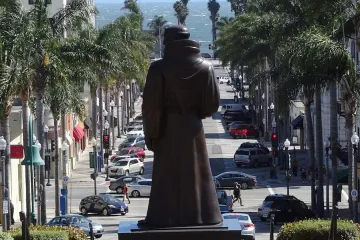Madrid, Spain, Jun 24, 2020 / 17:07 pm
The mayor of Boadilla del Monte, a town just west of metro Madrid in central Spain, has offered to take the statue of Saint Junipero Serra toppled last weekend in San Francisco.
Serra's statue was torn down in San Francisco's Golden Gate Park June 19, along with other statues of Francis Scott Key, author of the "Star Spangled Banner" and former U.S. president and Civil War general, Ulysses S. Grant.
The statue was one of numerous depictions of historic figures pulled down in the past week amid ongoing protests and riots throughout the country. While some protests have torn down the statues of Confederate figures, as part of a call to end systemic racism, other statues have also been torn down from prominent locations, including one of George Washington.
During the San Francisco protests, a statue of Miguel de Cervantes, author of the Spanish classic "Don Quixote" was tagged with the epithet "bastard."
According to the Spanish newspaper ABC, Javier Úbeda, the mayor of Boadilla del Monte, wrote to the mayor of San Francisco, London Breed, offering to take the downed statue of Serra, as well as the vandalized statue of Cervantes.
"I can't help writing to show you my deepest disappointment at the events that have occurred, but also to offer the willingness of my municipality to accept these symbols if they cannot be protected in your city with the due honor and respect they deserve," Úbeda said.
Saying that Serra was the "founding father of California," Úbeda quoted Pope Francis' remarks at the saint's canonization in 2015 that "he always sought to defend the dignity of the native community, protecting it from all those who had abused it."
Úbeda said he would be happy to take the statues of Serra and Cervantes for his town.
"Aware of the greatness of these two historical figures, architects in part of what we so proudly call western civilization today, more threatened today by ignorance than by external enemies, I place myself at your disposal," he said.
During the eighteenth century, Serra founded nine Catholic missions in the area that would later become California, many of those missions would go on to become the centers of major California cities.
Serra helped to convert thousands of native Californians to Christianity and taught them new agricultural technologies. The statue in Golden Gate Park was first placed in 1907, and was crafted by well-known American sculptor Douglas Tilden.
Critics have lambasted Serra as a symbol of European colonialism and said the missions engaged in the forced labor of Native Americans, sometimes claiming Bl. Serra himself was abusive.
But Serra's defenders say that Serra was actually an advocate for native people and a champion of human rights. They note the many native people he helped during his life, and their outpouring of grief at his death.
Biographers note that Serra frequently intervened for native people when they faced persecution from Spanish authorities. In one case, the priest intervened to spare the lives of several California natives who had attacked a Spanish outpost.
After the toppling of the Serra statue, San Francisco Archbishop Salvatore Cordileone warned, "A renewed national movement to heal memories and correct the injustices of racism and police brutality in our country has been hijacked by some into a movement of violence, looting and vandalism."
This article was originally published by our sister agency, ACI Prensa. It has been translated and adapted by CNA.
(Story continues below)





